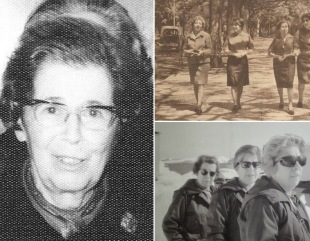Why Is Google’s Doodle Celebrating an Argentine Marine Biologist? – Argentine marine biologist, Irene Bernasconi specialized in the study of echinoderms and is best known for her work in the Antarctic.
She spent 55 years researching echinoderms found in the Argentine Sea and was the country’s first expert in the field. Her primary area of interest was sea stars, but she also studied brittle stars and sea urchins.
Why Is Google Doodle Celebrating Argentine Marine Biologist Irene Bernasconi
Google Doodle is celebrating the Argentinian marine biologist, Irene Bernasconi because she helped improve our knowledge of molluscs and other aquatic life.
Who was Irene Bernasconi?
Bernasconi described numerous novel genera and species throughout her career. In 1935, she published her first taxonomic work that described new species of the genus Pteraster.
She introduced two new species of the genus Luidia in 1941. The taxonomy of several families, including the Pterasteridae, Luidiidae, Odontasteridae, Gonisasteridae, Ganeriidae, Asterinidae, and Echinasteridae, was revised by Bernasconi between 1937 and 1980. She described the brand-new genus Vemaster in 1965, along with four brand-new species.
After arriving there on November 7, 1968, Bernasconi became one of the first female scientists from Argentina to conduct research there. She was also the first woman to command an Antarctic expedition. At the time, she was 72 years old.
Maria Adela Caria, a microbiologist, Elena Martinez Fontes, a marine biologist, and Carmen Pujals, a botanist, were with her.
Due to their connection to the Melchior Base Antarctic station, where they conducted their research and expeditions, these scientists are referred to as the “Four of Melchior.”
Each member of the expedition received a commemorative medal in 1969 from the “Embajada de Mujeres de América” (Embassy of Women of America) in honor of being the first group of female scientists to conduct research in Antarctica.
The group was given many posthumous awards. The Argentine Foreign Ministry, the Argentine Antarctic Institute, and the National Antarctic Directorate honored the scientists with four Antarctic place names, which were approved by the Naval Hydrography Service, to mark the campaign’s fiftieth anniversary: Pujals Bay, Cape Cara, Cape Fontes, and Bernasconi Bay.
24/7 UPDATES ON OUR WHATSAPP TV, JOIN NOW
Follow Us on Facebook – @2709Updates; Instagram – @2709Updates; X – @2709Updates;
Discover more from 2709 Updates
Subscribe to get the latest posts sent to your email.



